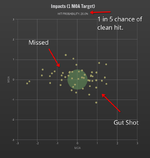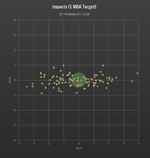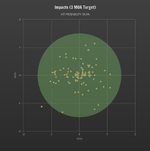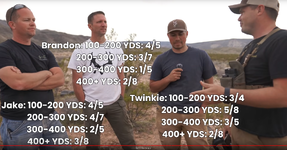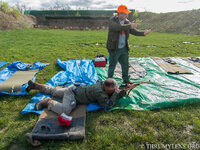This is interesting. Is it really that rare for someone to be that accurate at longer distances-especially 400-500Y? Although I know I am certainly not, i do have a buddy that has shot multiple elk at ranges I would never attempt (one at 750Y and another that he shot twice in the chest at 830Y). He shoots a lot and routinely shoots prairie dogs in the 500Y range but maybe he is quite the exception.
This is my personal opinion after watching even very good shooters make mistakes at range. I've done heaps of LR shooting, PRS matches, and ELR. There is a lot that can go wrong.
I was just discussing this yesterday with someone that for
most people, they have already introduced 2-3MOA of error in their rifle system before the bullet has even left the barrel. This is their own errors when taking the shot, rifle system accuracy limits, scope limits, ammo limits, etc. If you've got it really dialed in, maybe I'd say you are 1.5MOA of error before the bullet leaves the rifle in field conditions.
I can shoot 1-0.5MOA on a flat range on a sunny day with perfectly set bipod, etc. That's not what we're talking about though.
At range for the average shooter in the field I'd suspect they have 2-3" of variability per 100y (2-3MOA error per 100y). At 300 yards they are at 6-9" cone of fire for the kill. For extremely dialed in shooters, they are 1.5" per 100y. They are then at about 4.5" cone of error as the bullet leaves the rifle at 300y (1.5" per 100y).
Then on top of this you add in wind which is an issue past 300y, and definitely an issue past 400y. This error varies substantially. Also, animals move a lot. You can shoot at the animal, it takes a step when you break the shot, and now the perfect shot is in the guts.
For the average shooter, they are already at max effective accurate range for them at 300y with 6-9" error. Add in a couple inches potential for wind and they are 8-10" cone of error. That is basically the kill zone for a deer sized animal. For most, 300y is their limit and that may be generous in the field.
For the expert shooter, if we ignore wind, their 1.5" of error is 9" cone at 600y. That is the likely absolute max they can do reliably under perfect conditions. Now you add in wind and I'd say again that range rapidly erodes to 4-500y max for them for
reliable hits. That's just how the numbers work when you incorporate all these other factors the shooter has no control over as well.
With the above, and my own experience, when I hear these stories of really long shots on animals and they never wound any? Well I think that's just BS. They are missing and wounding and there is no way they can't be based on odds alone.
It's like someone coming up to me and saying when they go to Vegas they spin the roulette wheel 10 times and always win. I mean sure it could happen, but if I were allowed to bet against that happening on the table that would be the better way to use the money.
Those are just the numbers and no campfire story telling can change them!

